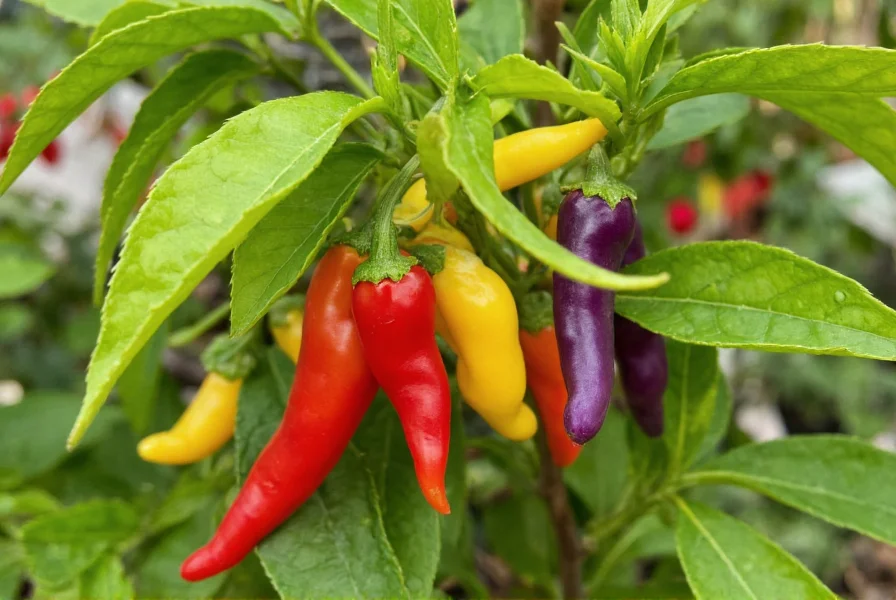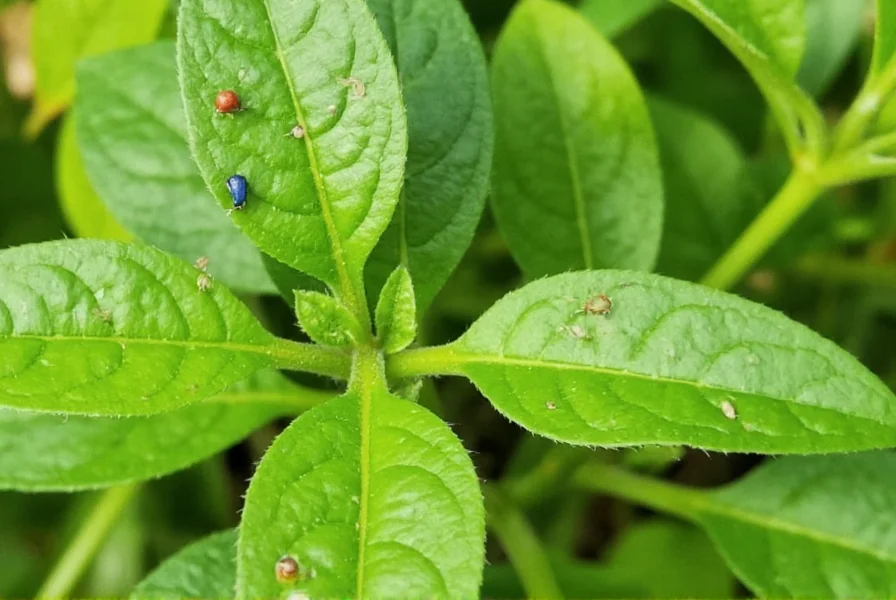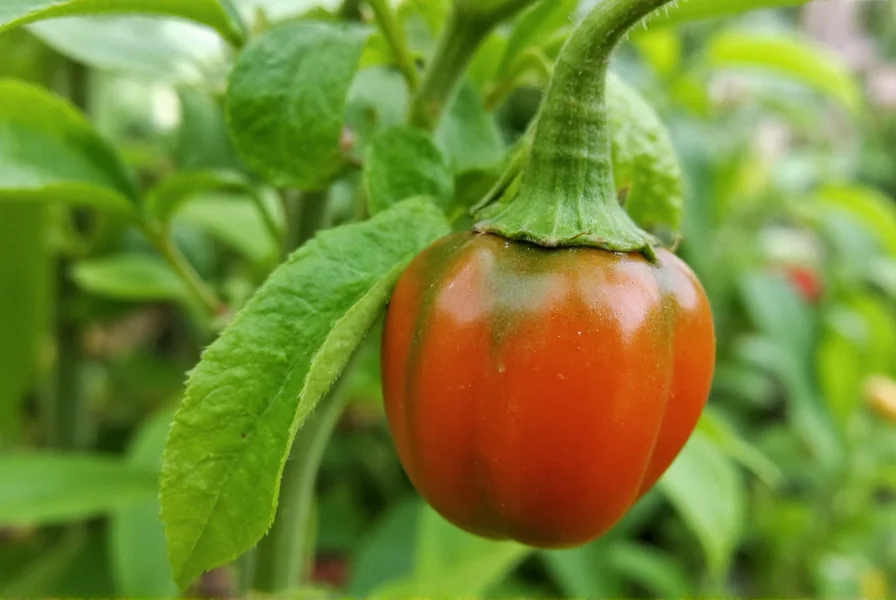Ornamental peppers transform gardens and patios with their vibrant, jewel-toned fruits that range from brilliant reds and purples to sunny yellows and oranges. Unlike their culinary cousins, these varieties prioritize visual appeal over flavor, though they share the same botanical family (Capsicum annuum). Understanding their unique characteristics helps gardeners maximize their decorative potential while avoiding common cultivation pitfalls.
Distinctive Characteristics of Ornamental Peppers
Ornamental pepper plants typically grow 12-24 inches tall with compact, bushy forms ideal for containers and border plantings. Their fruits appear in striking clusters along upright stems, creating a "flame-like" visual effect as they mature through multiple color stages. While most measure 1-2 inches long, some varieties like 'Black Pearl' produce nearly spherical fruits, while 'Explosive Ember' develops elongated, tapered pods.
The heat level in ornamental peppers often surprises novice growers. Many varieties register between 30,000-50,000 Scoville Heat Units (SHU), comparable to cayenne peppers. This intense capsaicin concentration serves as a natural pest deterrent but makes them generally unsuitable for culinary use. Their flavor profile tends to be grassy and bitter rather than the complex sweetness found in culinary peppers.

Top Ornamental Pepper Varieties for Gardeners
Gardeners have numerous visually stunning options when selecting ornamental peppers. Each variety offers unique color patterns and growth habits suited to different display purposes.
| Variety | Color Progression | Height | Special Features |
|---|---|---|---|
| 'Black Pearl' | Purple to red | 18-24 inches | Deep purple foliage, award-winning variety |
| 'Medusa' | Yellow to red | 12-15 inches | Braided fruit clusters, compact for containers |
| 'Fiesta' | Purple to yellow to orange to red | 15-18 inches | Multiple colors simultaneously on one plant |
| 'Explosive Ember' | Yellow to orange to red | 18-24 inches | Fiery color gradient, upright growth habit |
Optimal Growing Conditions for Ornamental Peppers
Successful ornamental pepper cultivation requires attention to specific environmental factors. These tropical plants thrive in warm conditions similar to their Central and South American origins.
Light Requirements: Provide 6-8 hours of direct sunlight daily. Insufficient light causes leggy growth and reduced fruiting. When growing ornamental peppers indoors, position near south-facing windows or supplement with grow lights for 12-14 hours daily.
Soil and Container Needs: Use well-draining potting mix with 20-30% perlite for container growing. The ideal pH range is 6.0-6.8. Containers should have drainage holes and be at least 12 inches wide to accommodate root development. For garden beds, amend soil with compost to improve drainage.
Watering Practices: Maintain consistent moisture without saturation. Water when the top inch of soil feels dry, typically every 2-3 days during hot weather. Reduce frequency in cooler temperatures. Avoid overhead watering to prevent fungal diseases.
Essential Care Practices for Healthy Plants
Proper maintenance ensures vibrant displays throughout the growing season. Ornamental peppers typically produce flowers and fruits continuously when cared for correctly.
Fertilization Schedule: Apply balanced liquid fertilizer (10-10-10) every 2-3 weeks during active growth. Reduce feeding in fall and winter when growth slows. Over-fertilization promotes leafy growth at the expense of fruit production.
Pruning Techniques: Pinch back growing tips when plants reach 6 inches tall to encourage bushier growth. Remove spent flowers to redirect energy toward new blooms. For overwintering, prune plants by one-third before moving indoors.
Pest Management: Monitor for aphids, spider mites, and whiteflies. Treat infestations with insecticidal soap or neem oil solutions. The natural capsaicin in the plants deters many common pests, making them relatively low-maintenance compared to other ornamentals.

Edibility Considerations for Ornamental Peppers
While technically edible, ornamental peppers present several considerations for potential consumption. Their extreme heat level (often exceeding 30,000 SHU) makes them significantly hotter than jalapeños (2,500-8,000 SHU). The flavor profile tends to be one-dimensional and bitter compared to culinary varieties bred for taste.
Gardeners should exercise caution when growing ornamental peppers around children or pets. The attractive, colorful fruits may tempt sampling, potentially causing significant mouth irritation. Always wear gloves when handling extremely hot varieties and avoid touching your face. If using in culinary applications, incorporate tiny amounts into dishes requiring intense heat, but most gardeners prefer reserving these plants strictly for decorative purposes.
Troubleshooting Common Ornamental Pepper Problems
Even with proper care, ornamental peppers may encounter certain issues. Recognizing and addressing these problems promptly preserves their decorative value.
Blossom Drop: Caused by temperature extremes (below 60°F or above 90°F), inconsistent watering, or poor pollination. Maintain stable temperatures and gently shake plants during flowering to improve pollination.
Yellowing Leaves: Often indicates overwatering or nutrient deficiency. Check soil moisture before watering and apply balanced fertilizer. If lower leaves yellow first, it may be natural senescence rather than a problem.
Poor Fruit Set: Results from insufficient light, improper fertilization (too much nitrogen), or inadequate pollination. Ensure plants receive adequate sunlight and use phosphorus-rich fertilizer during flowering stages.
Seasonal Care and Overwintering Strategies
Ornamental peppers can survive multiple seasons with proper winter care. In USDA zones 9-11, they may remain outdoors year-round. Gardeners in cooler climates can overwinter plants indoors.
Before first frost, cut plants back by one-third and transplant to containers. Place in a bright location with temperatures between 60-75°F. Water sparingly during winter dormancy, allowing soil to dry between waterings. In spring, gradually reintroduce plants to outdoor conditions over 7-10 days before returning them to their permanent locations.
Conclusion
Ornamental peppers offer gardeners a vibrant, low-maintenance option for adding year-round color to landscapes and containers. By understanding their specific growing requirements and unique characteristics, you can enjoy their striking visual appeal while avoiding common cultivation mistakes. Whether used as focal points in container arrangements or as colorful accents in garden beds, these versatile plants provide months of visual interest with proper care.
Frequently Asked Questions
Are ornamental peppers safe to eat?
Ornamental peppers are technically edible but generally not recommended for consumption. They contain high capsaicin levels (30,000-50,000 Scoville units), making them extremely hot with often bitter flavor. While not poisonous, their intense heat can cause significant mouth irritation, especially for children.
How long do ornamental pepper plants live?
Ornamental pepper plants are perennials in warm climates (USDA zones 9-11) and can live 3-5 years with proper care. In cooler climates, they're typically grown as annuals but can be overwintered indoors for multiple seasons. Container-grown plants often have shorter lifespans (1-2 years) due to root restriction.
Why are my ornamental peppers not producing fruit?
Common reasons include insufficient sunlight (needs 6-8 hours daily), temperature extremes (below 60°F or above 90°F), inconsistent watering, or improper fertilization. High nitrogen fertilizers promote leaf growth at the expense of fruiting. Ensure proper pollination by gently shaking plants during flowering or using a small brush to transfer pollen.
Can I grow ornamental peppers indoors year-round?
Yes, ornamental peppers can thrive indoors with proper conditions. They require 6-8 hours of direct sunlight from a south-facing window or 12-14 hours under grow lights. Maintain temperatures between 65-80°F, provide good air circulation, and water when the top inch of soil dries. Indoor plants may need supplemental feeding with balanced fertilizer every 3-4 weeks during active growth.
How do I prevent pests on my ornamental pepper plants?
Regularly inspect plants for aphids, spider mites, and whiteflies. The natural capsaicin in peppers deters many pests, but problematic infestations can be treated with insecticidal soap or neem oil solutions. Ensure proper air circulation, avoid overhead watering, and remove affected leaves promptly. Introducing beneficial insects like ladybugs can also help control pest populations naturally.











 浙公网安备
33010002000092号
浙公网安备
33010002000092号 浙B2-20120091-4
浙B2-20120091-4